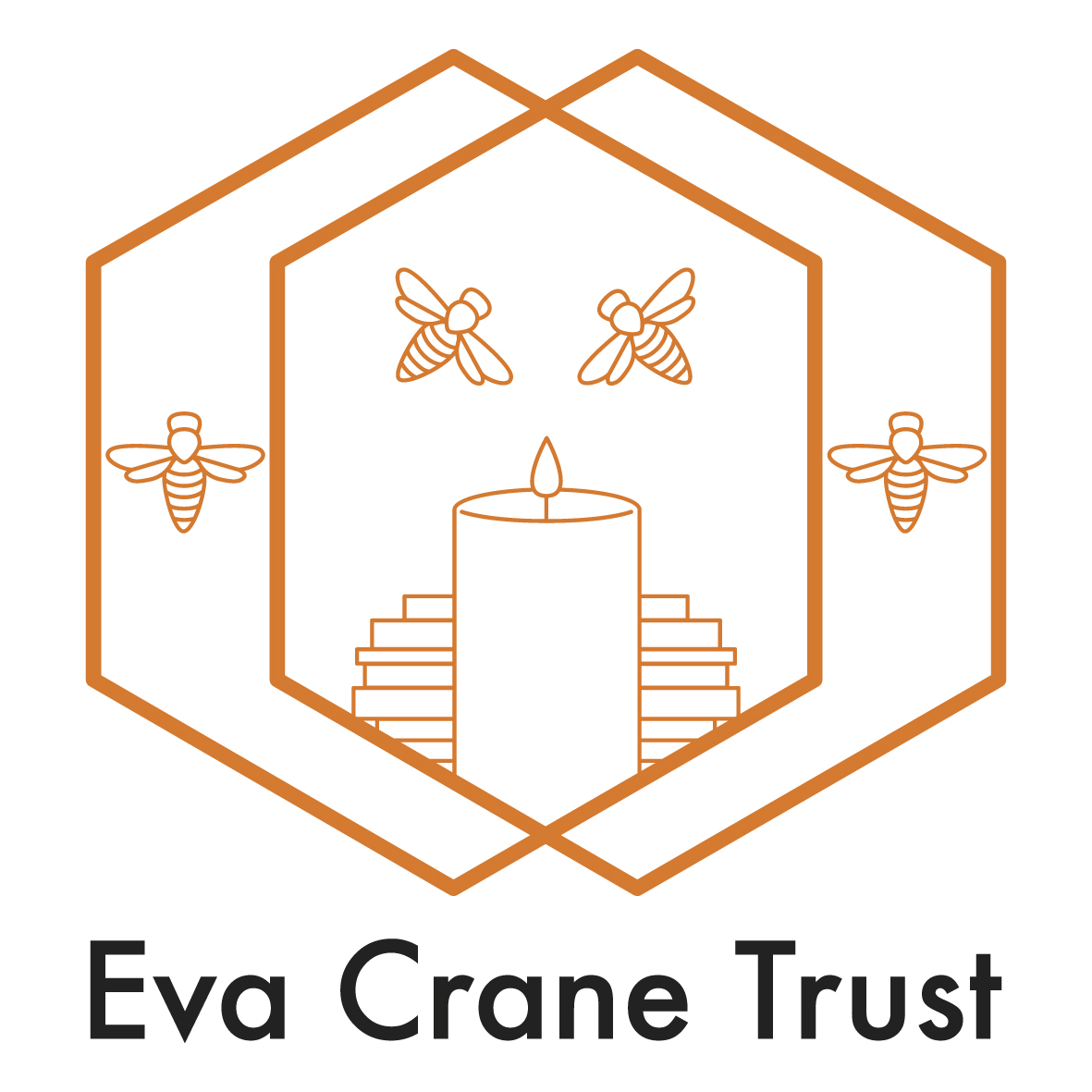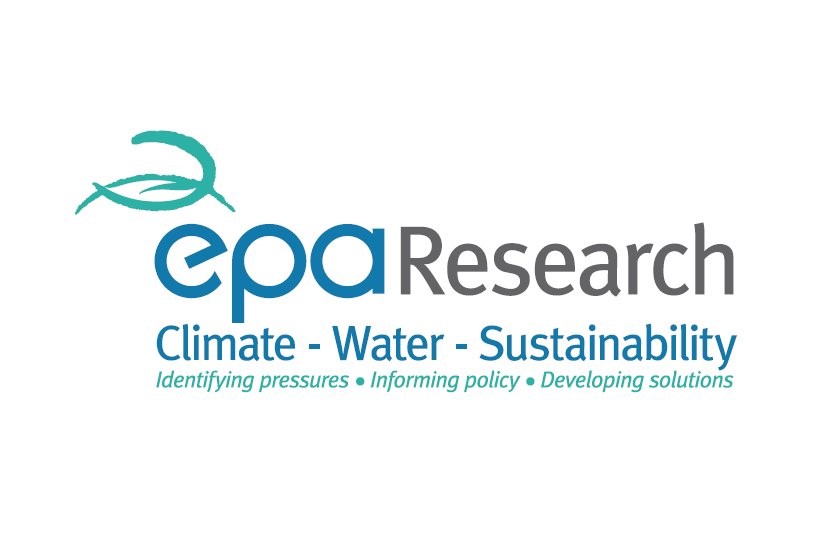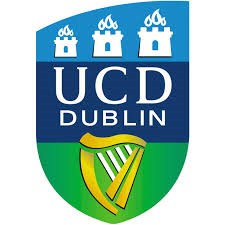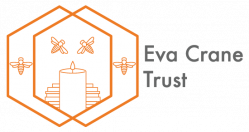Brilliant Bees: The importance of wild and managed pollinators to Irish agricultural systems
Brilliant Bees: The importance of wild and managed pollinators to Irish agricultural systems
Brilliant Bees: The importance of wild and managed pollinators to Irish agricultural systems
Katherine Burns and Dr Dara Stanley
University College Dublin
Background
Insect pollinators play a key role in maintaining the health and function of both agricultural and natural
systems. However, in recent years, pollination has become a particularly vulnerable ecosystem service due to global insect decline. More studies are needed to gather information on the pollination mechanisms and requirements of different crop species, and to determine the possible impact of global pollinator loss on the production of a diversity of crops. Additionally, knowledge of which insects are primarily responsible for the pollination of certain crops will help to inform future conservation measures and management plans for specific target species.
Aims
To contribute to the growing body of knowledge of pollinator contributions to global crop systems, we assessed the contributions of wild and managed pollinators to the pollination of two major insect-pollinated Irish crops: apples (Malus domestica) and faba beans (Vicia faba). Apples are one of the most economically important insect-pollinated fruit crops, occupying 4.84 million hectares of cultivated area globally. The faba bean is a widely grown insect-pollinated crop species, cultivated as both a protein-rich food for humans and animals, as well as a nitrogen-fixing break crop to improve soil conditions. We aimed to determine whether certain species of floral visitors pollinate apples and beans more efficiently than others and whether Irish field bean and apple yields are limited by the pollination services they receive.
Approach
In Spring 2018, we established a network of apple orchards and field bean fields in Southeast Ireland, which were visited several times over the course of the spring to collect data on the diversity, abundance, and visitation rates of pollinators.
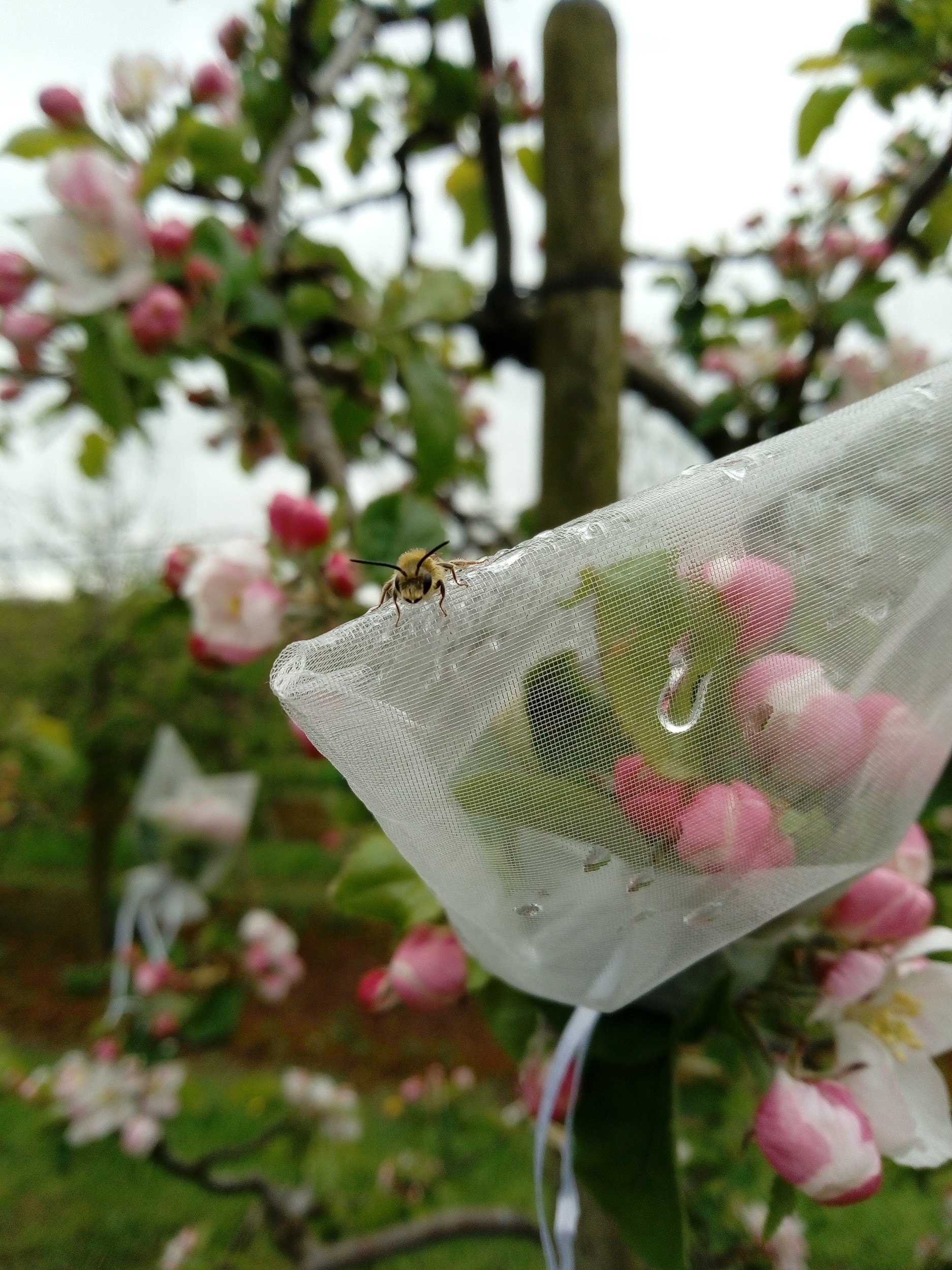
A male solitary bee resting on one of the pollination experiments (photo by KB)
We also conducted field experiments to determine whether the flowers of Irish apples and beans are pollen limited (i.e. reproductive success is limited by the quantity or quality of delivered pollen).
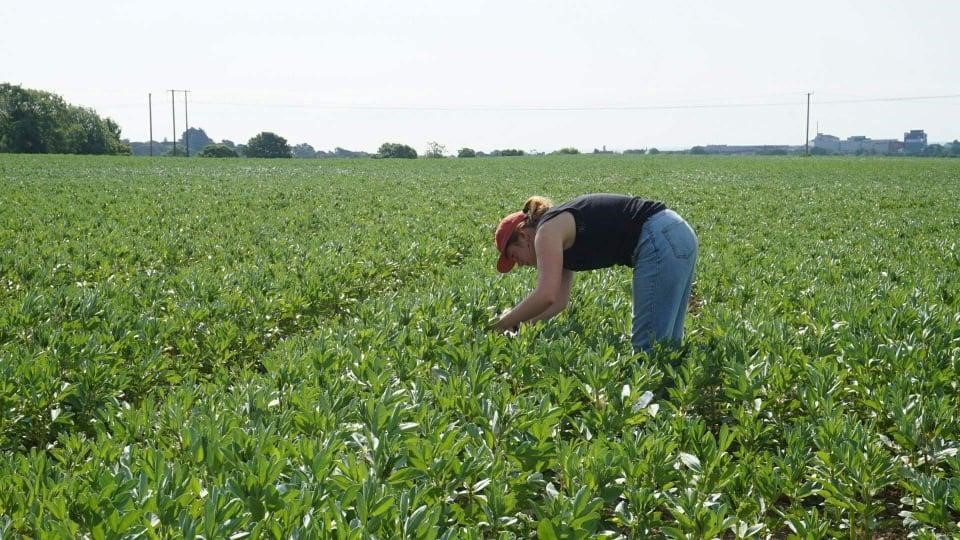
Katherine Burns setting up pollination experiments in a faba bean field (photo by Aine Gregg)
In Spring 2019, we collected additional data in dessert and cider apple orchards to assess the body pollen of floral visitors to determine the contributions of different pollinator groups to pollination.
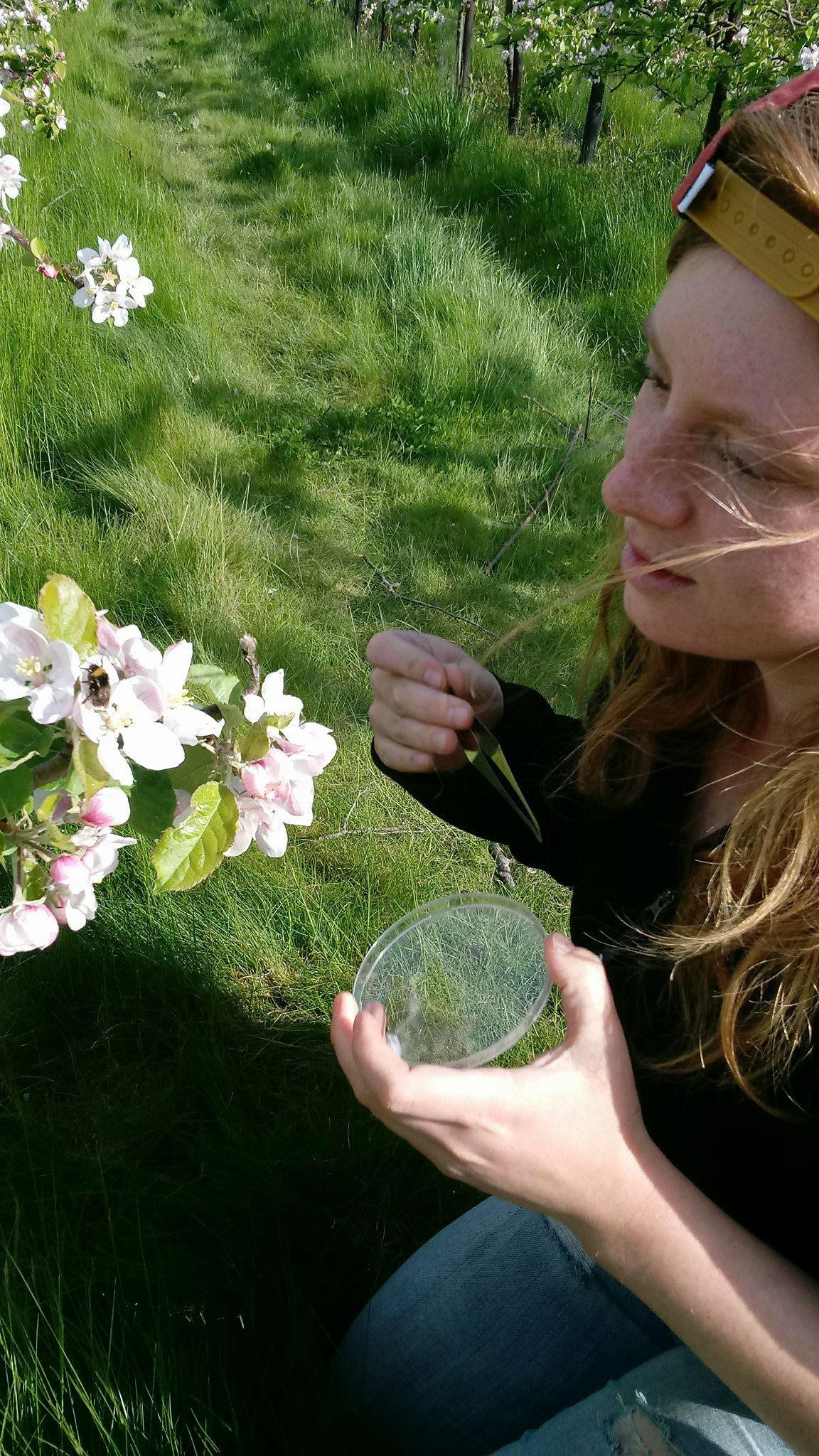
KB placing a bumblebee on an apple flower after collecting its body pollen (photo by Beau Williams)
We also collected data in faba bean fields to determine how foraging behaviour (e.g. nectar robbing) affects bean yield and the pollination efficiency of floral visitors.
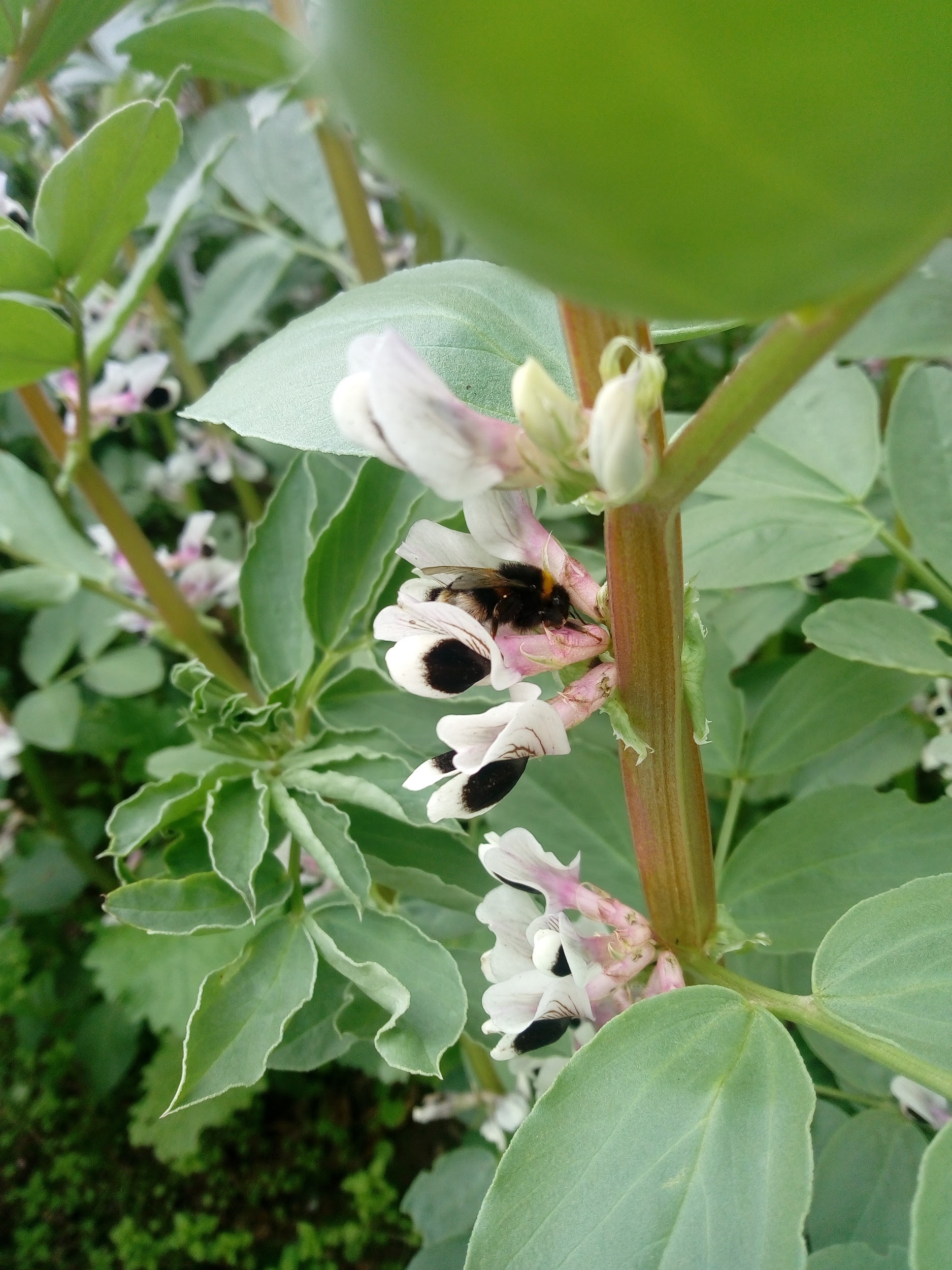
A Bombus lucorum agg. nectar robbing a faba bean flower (photo by KB)
Initial Findings
In dessert apples, the results of the pollination experiments show that hand-pollinated treatments had higher average proportional yield and seed count, while excluded treatments appear to produce larger, firmer, sweeter apples than the open and hand-pollinated treatments (Table 1). Similarly, in cider apples, hand-pollinated treatments produced a higher average proportional yield and seed count than excluded treatments (Table 2). In faba beans, the open and hand-pollinated treatments produced a higher average percent yield and bean pod weight than the excluded and self-pollinated treatments. More analysis is required to determine whether these differences between treatments are significant, but this preliminary data suggests that insect pollination is crucial in these crops in Ireland
We recorded 556 total individuals during our transect surveys across all sites in dessert apple orchards: 197 bumblebees, 148 honeybees, 150 hoverflies, 52 solitary bees and 9 other insects. In cider apple orchards, we recorded 744 total individuals: 64 bumblebees, 600 honeybees, 41 hoverflies, 29 solitary bees, and 10 other insects. This difference in honeybee numbers between cider and dessert apples may be due to the fact that winter oilseed rape, a crop on which honeybees are often active, blooms at the same time as dessert apples, potentially drawing honeybees away from the apples.
In faba bean fields, 810 total individuals were recorded across all sites: 419 bumblebees, 364 honeybees, 22 hoverflies, and 5 other insects.
We are currently processing body pollen samples, which will give us an idea of the contributions of each pollinator group to crop pollination. We also plan to conduct an economic valuation to put a monetary value on the contributions of these different pollinator groups.
Tables
Table 1: Average values of proportional dessert apple yield (# flowers/# fruits) and average values of quality assessments (i.e. weight of formed fruits, width, sugar content, firmness, and seed count) performed on dessert apples harvested from each treatment: Excluded (no pollinator visits), Open (natural conditions), and Hand-pollinated (pollen manually moved from one flower to another).
|
Treatment |
Average Proportional Yield |
Average Weight (g) |
Average Width (mm) |
Average Sugar Content (% Brix) |
Average Firmness (kg/cm2) |
Average Seed Count |
|
Excluded |
0.02 |
205.50 |
79.00 |
11.96 |
9.25 |
0.20 |
|
Open |
0.33 |
191.24 |
75.34 |
11.58 |
8.90 |
2.89 |
|
Hand-Pollinated |
0.45 |
172.11 |
71.94 |
11.42 |
8.93 |
4.02 |
Table 2: Average values of proportional cider apple yield (# flowers/# fruits) and average values of quality assessments (i.e. weight of formed fruits, width, sugar content, and seed count) performed on cider apples harvested from each treatment: Excluded (no pollinator visits), Open (natural conditions), and Hand-pollinated (pollen manually moved from one flower to another)
|
Treatment |
Average Proportional Yield |
Average Weight (g) |
Average Width (mm) |
Average Sugar Content (% Brix) |
Average Seed Count |
|
Excluded |
0.14 |
48.49 |
48.55 |
13.05 |
0.16 |
|
Open |
0.26 |
50.46 |
49.82 |
13.02 |
1.60 |
|
Hand-Pollinated |
0.26 |
46.43 |
47.64 |
13.31 |
1.96 |
Acknowledgements
This work was led by Katherine Burns, supervised by Dr Dara Stanley at the National University of Ireland Galway (2018) and University College Dublin (2019). Additional funding for this project was provided by the Irish Research Council (co-funded through the EPA Government of Ireland) and a NUI Galway Science Scholarship.
With the Eva Crane Trust’s assistance we were able to afford equipment and travel to and from our study sites, as well as participate in the Royal Entomological Society Annual Conference (Ento 18’), where we presented our preliminary results. We truly appreciate the support of the Eva Crane Trust and its dedication to promoting the understanding and conservation of bees and other pollinators.
